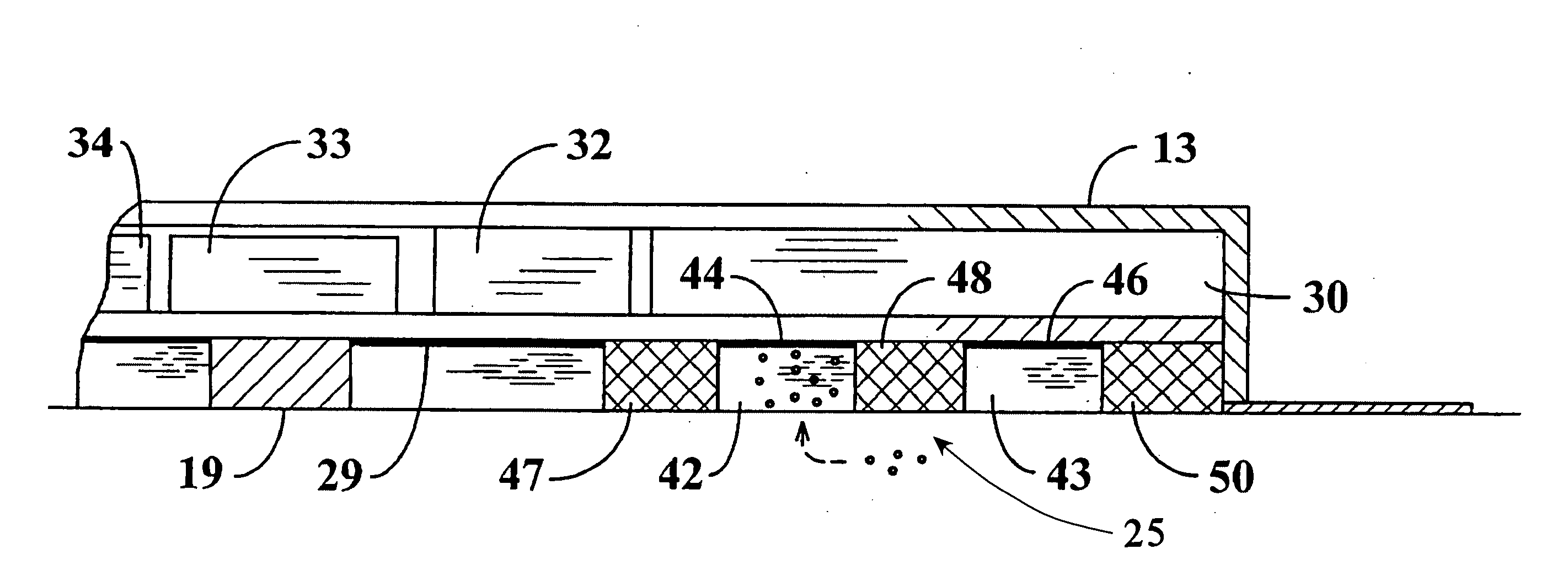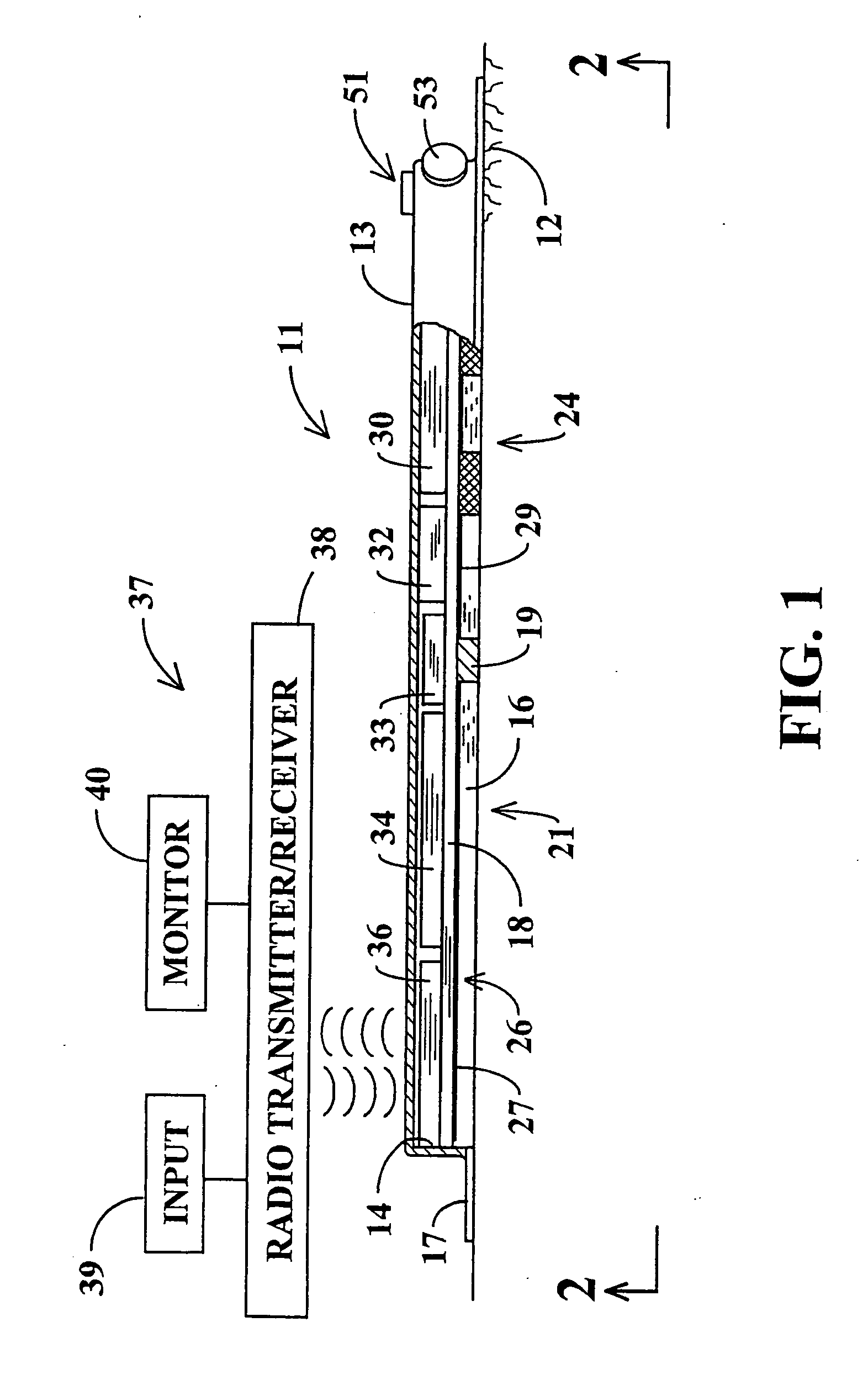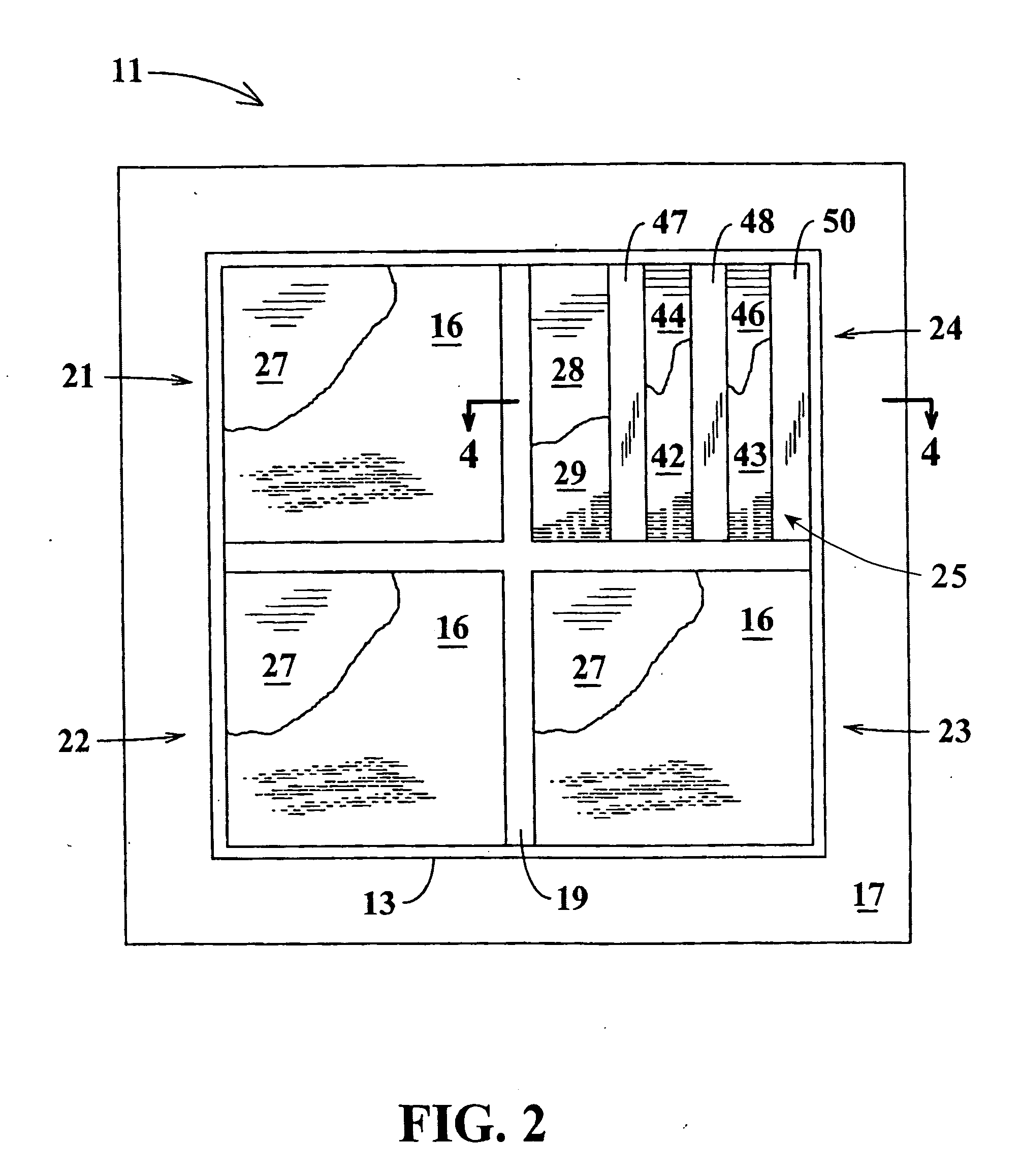Non-invasive analysis and controlled dosage transdermal active patch
a transdermal active patch, non-invasive technology, applied in the field of transdermal patches, can solve the problems of inability to adjust the dosage rate of the above described original transdermal active patch, inability to apply, and inability to achieve the effect of reducing the risk of infection,
- Summary
- Abstract
- Description
- Claims
- Application Information
AI Technical Summary
Benefits of technology
Problems solved by technology
Method used
Image
Examples
Embodiment Construction
[0031]Referring jointly to FIGS. 1 and 2 of the drawings, a controlled dosage transdermal patch 11 embodying the invention is adhered to the skin 12 of a person who is to be administered one or more pharmaceutical drugs or other bio-active agents. The patch 11 of this example includes an outer cover 13 forming a thin chamber 14 having an open underside that faces the person's skin. Agent storage pads 16 at the underside of the patch 11 may be of any of the known hydrophilic compositions and are preferably hydrogel pads of the type that adhere to the skin. Retention of the patch may be augmented by a skirt 17 of adhesive tape which extends outward from the periphery of cover 13 at the underside of the cover. Chamber 14 is divided into upper and lower regions by a circuit board 18 which supports electronic components, to be hereinafter described, within the upper region of the chamber.
[0032]The patch may be designed to administer a single bio-active agent or to administer any selected...
PUM
 Login to View More
Login to View More Abstract
Description
Claims
Application Information
 Login to View More
Login to View More - R&D
- Intellectual Property
- Life Sciences
- Materials
- Tech Scout
- Unparalleled Data Quality
- Higher Quality Content
- 60% Fewer Hallucinations
Browse by: Latest US Patents, China's latest patents, Technical Efficacy Thesaurus, Application Domain, Technology Topic, Popular Technical Reports.
© 2025 PatSnap. All rights reserved.Legal|Privacy policy|Modern Slavery Act Transparency Statement|Sitemap|About US| Contact US: help@patsnap.com



